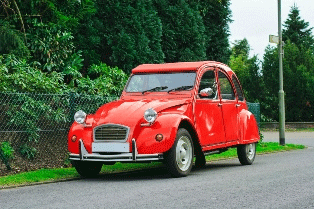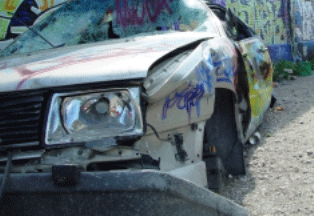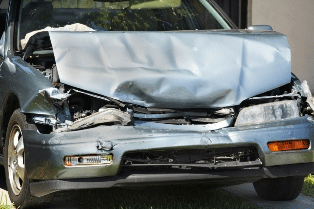Five Myths About Auto Insurance
 Sorting through the many myths about what car insurance covers can make the process of buying the right policy confusing.
Sorting through the many myths about what car insurance covers can make the process of buying the right policy confusing.
Before you start shopping for auto insurance, make sure you’re armed with facts. One way to do this is to read policies thoroughly before making a purchase, says Pete Moraga, a spokesman for the Insurance Information Network of California. If you don’t understand something, ask your agent for clarification.
“The biggest misconceptions (happen) because people don’t read their policies,” Moraga says. “It’s really important for drivers to understand their coverage.”
Auto insurance myths often sound plausible but don’t hold up under close examination. Below are five common car insurance myths.
—-
 1. It will cost more to insure a red car.
1. It will cost more to insure a red car.
While some people think the drivers of red cars tend to be reckless and get more traffic tickets, there’s no data to back this up, says California insurance agent Jim Armitage. The color of your car “isn’t insurance-related at all,” he says.
Auto insurance companies insure cars and drivers, not colors. Prices are based on your likelihood of filing a claim. Your carrier will want to know the make, model, year and engine size of your car when determining risk. You’ll be asked where you live and whether you plan to store your car in a garage. Your driving record also will be a factor in determining the amount of your annual premium.
—-
 2.Thieves prefer to steal new cars.
2.Thieves prefer to steal new cars.
Because new cars are more valuable than used vehicles, it seems logical to assume they are more likely to be stolen. In fact, the opposite is true. According to a National Insurance Crime Bureau (NICB) report from August 2013, the 1996 Honda Accord was the top choice of car thieves in 2012, with 8,637 thefts nationwide.
In Oregon, the top 10 most stolen models in 2012 all were manufactured before 2002. The newest model on the list was a 2001 Dodge full-size pickup.”By far, the greatest numbers that are stolen are older vehicles,” said Frank Scafidi, NICB spokesman.
Cars that are at least 10 years old dominate the “most stolen” list, in part, because they’re easier to steal. They have either fewer or less-sophisticated anti-theft devices. Also, there’s a strong market for used auto parts. Instead of selling the whole car, thieves often dismantle older vehicles and sell them off piece by piece.
—-
 3. If your friend wrecks your car, his insurance will cover the claim.
3. If your friend wrecks your car, his insurance will cover the claim.
If you give your friend permission to take drive your car, your car insurance — not his — is primarily responsible for harm he causes to other people or property. If there’s an accident, your insurance will be on the hook.
Insurance coverage follows the car, not the driver, Moraga says.
You’ll be responsible for filing a claim.You also will have to pay your deductible before your coverage takes effect. The accident victim won’t seek money from your friend’s policy until your policy has reached its limit.
Remember, if your carrier has to pay such a claim, your insurance rates may rise.
—-
 4. Car insurance protects you against damage not caused by vehicular accidents.
4. Car insurance protects you against damage not caused by vehicular accidents.
An auto insurance policy doesn’t automatically protect your car against theft, vandalism, hail damage, fire or collisions with animals. For example, a very basic policy in most states requires you to purchase only auto liability coverage. This covers the harm you may cause to other vehicles and their passengers.
However, you’ll need to purchase separate comprehensive coverage if you want a policy that will pay for damage to your vehicle that isn’t the result of accidents, Moraga says.
—-
 5. If your car is totaled, your car insurance will pay off the loan.
5. If your car is totaled, your car insurance will pay off the loan.
If your car is declared to be a total loss following an accident, your carrier is under no obligation to pay what you owe on an auto loan or a lease agreement. You could get stuck with paying the balance, even though your car no longer can be driven.
Cars usually are “totaled” when the cost of repairs approaches 65 percent of the vehicle’s market value. This formula varies by insurer, however, and may be established by state law. To be sure of the formula, contact your insurance company.
Once a car has been declared totaled, the insurance company typically will pay the actual cash value of the car, less your deductible. Actual cash value is what your car could have sold for before the accident.
You can cover the difference between the car’s cash value and the amount you owe on it by buying gap insurance. This type of policy can be used to cover both loans and car leases.
Armitage says this is inexpensive coverage that typically can be purchased for about $6 per year.
